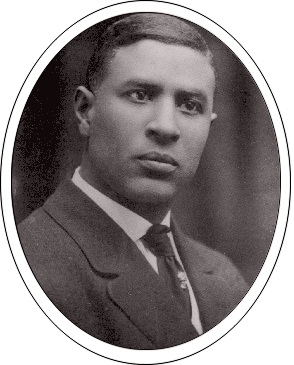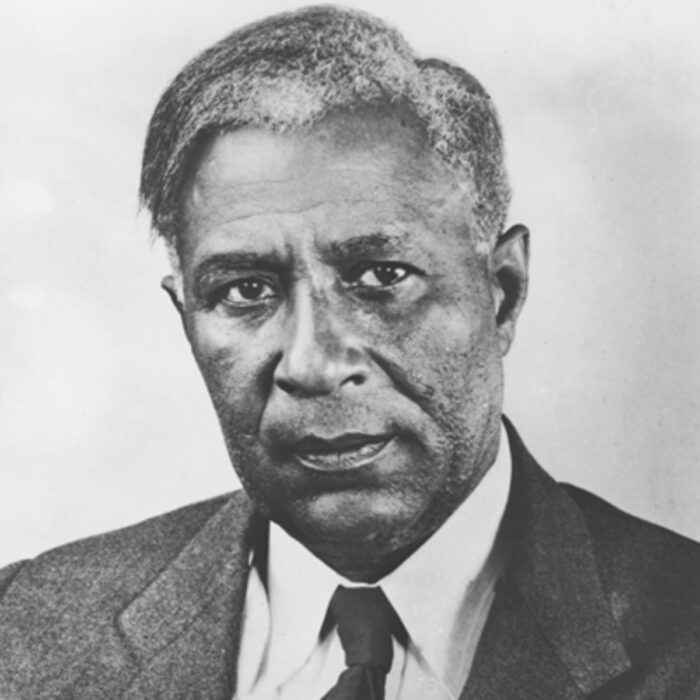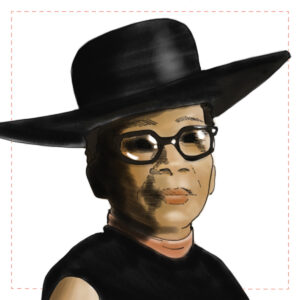Garrett Morgan | Profiles in Sewing History
Inventor who began his career improving sewing machines
Garrett Morgan began his career learning about the intricacies of sewing machines, and even opened his own clothing manufacturing company, before becoming a prolific inventor and entrepreneur. He was always curious about the world around him and dedicated his life to improving the lives of others. His inspiring story is the next installment of our Profiles in Sewing History series.
Garrett Morgan’s early life
Garrett Augustus Morgan was born in Paris, Kentucky, on March 4, 1877. Both of his parents were formerly enslaved people and of mixed descent. Garrett dropped out of school after only six years and, by age 14, moved to Cincinnati, Ohio, to find a job. There, he worked as a handyman for a wealthy landowner for six years until he moved to Cleveland, Ohio, where he spent the rest of his life.
Working in the sewing industry
In Cleveland, Garrett worked for several years as a sewing machine repairman for various companies. As a result, he got to know the inner workings of the machines and, in 1901, he sold his first invention: a sewing machine belt fastener, which helped make machines more efficient.

By 1907, Garrett decided to open his own shop that sold and repaired sewing machines. The shop did so well in its first year that Garrett had enough money to buy a house. Despite his success, Garrett continued to work hard and strived to improve the quality of his machines. It wasn’t long before he invented a zigzag stitching attachment for manually operated sewing machines.
In 1908, Garrett married Mary Anne Hassek, a Bavarian seamstress. Together, they had three sons and expanded Garrett’s business by launching the Morgan Skirt Factory. This was a men’s and women’s clothing manufacturing company that made dresses, suits, and coats. At its peak, the company employed more than 30 workers.
Branching out
In an unexpected turn of events, a sewing machine discovery soon led Garrett to open his own hair care company. As it turns out, Garrett was in the process of trying to figure out how to prevent sewing machine needles from scorching wool fabric when the needle moved through the fabric too quickly. To counteract the friction, Garrett experimented with a chemical solution, which he realized simultaneously straightened the fabric’s fibers. Just to make sure he was onto something, Garrett tested the solution on a neighbor’s dog and, later, on himself. The solution did, in fact, straighten hair.
Hair care products
By 1913, Garrett established the G. A. Morgan Hair Refining Company, where he sold the solution as a cream, along with additional hair care products. Once again, the company was a big success, which enabled Garrett to explore other interests.

Breathing devices
After hearing about the Triangle Shirtwaist Factory Fire in 1911, which killed more than 140 garment workers, Garrett decided to develop a breathing apparatus so wearers could temporarily withstand smoke, gas, and other air pollutants. Garrett felt especially close to this tragedy, since he had been a garment factory worker himself. By 1914, he received a patent for his device. Garrett worked hard to market his “safety hood,” as he called it, to rescue workers around the country, but found it particularly difficult to sell his invention in the South because of his skin color. As a result, he hired a white actor to pretend to be the inventor during presentations for his product. The scheme worked and sales improved.
That is, until 1916, when a tunnel explosion below Lake Erie trapped workers underground amid toxic fumes. Garrett decided he was the perfect candidate to help with the rescue mission, so he and his brother put on his breathing devices, entered the tunnel, and managed to save multiple lives. Following this heroic act, the publicity confirmed that Garrett was of African American descent, which hurt sales once again. Nevertheless, Morgan’s innovative device became the prototype for the gas masks used during World War I.

Traffic signal
Similarly, after witnessing a carriage accident at a particularly problematic city intersection, Garrett knew there must be a better way to regulate traffic. Instead of keeping with the “stop” and “go” traffic signals, he created the precursor to today’s electric traffic signal, which included a third interim warning position (similar to today’s yellow light) so drivers had time to clear an intersection before anyone else could enter it. Once again, due to racial concerns, Garrett figured he would encounter difficulties marketing the product as an African American man. Therefore, he sold the invention to the General Electric Company for $40,000 in 1923.
Service and legacy
Community leader
Besides spending much of his life creating inventions to help others, Garrett also proved generous with his time and money. He was active in his community, as he served on the board of the Cleveland Association of Colored Men and established the Wakeman Country Club for African Americans in 1923. He also founded a weekly African American newspaper called the Cleveland Call in 1920 and was a member of the National Association for the Advancement of Colored People.
Advocate of education
Education was important to Garrett, which is why he donated money to African American colleges. In 1943, Garrett developed glaucoma, however, and ended up losing most of his eyesight. On July 27, 1963, he died in Cleveland at age 86.
Garrett’s legacy is evident today as multiple schools have been named after him, including the Garrett Morgan School of Engineering & Innovation in Cleveland. In addition, right before his death, the U.S. government honored Garrett for his traffic signal contribution. Garrett’s inventions saved the lives of firefighters, soldiers, and even vehicle operators all over the world and paved the way for many of today’s advancements. Garrett was a truly talented individual with a big heart and a desire to make a difference.
Have you heard of Garrett Morgan? What do you think about his transition from sewing machine shop owner to hair care company entrepreneur? Please share your thoughts in the comments below.
Click here for additional installments of Profiles in Sewing History.
Sources
DeLuca, Leo. “Black Inventor Garrett Morgan Saved Countless Lives with Gas Mask and Improved Traffic Lights.” Scientific American, 25 Feb. 2021, www.scientificamerican.com/article/black-inventor-garrett-morgan-saved-countless-lives-with-gas-mask-and-improved-traffic-lights/.
“Garrett A. Morgan.” Encyclopedia of Cleveland History, case.edu/ech/articles/m/morgan-garrett.
Garrett Augustus Morgan. Public Broadcasting Service, www.pbs.org/wgbh/theymadeamerica/whomade/morgan_hi.html.
“Garrett Morgan Patents Three-Position Traffic Signal.” History.com, A&E Television Networks, 18 Nov. 2020, www.history.com/this-day-in-history/garrett-morgan-patents-three-position-traffic-signal.
“Garrett Morgan.” Biography.com, A&E Networks Television, 3 June 2021, www.biography.com/inventor/garrett-morgan.
Gates, Henry Louis, and Evelyn Brooks Higginbotham. African American Lives. Oxford University Press, 2004.
Illustration: Steven Fleck.
































I had never heard of Mr. Morgan; however, he was certainly an impressive and ingenious individual. The number of people who have made significant contributions to our way of life while remaining relatively unknown is amazing.
Agreed! It’s fascinating to learn the hidden stories behind modern life. My grandmother’s Singer is of the vintage Morgan would have been familiar with. An editorial question arises: in most reports/stories in the public domain the subject is referred to by his/her last name. Every mention in this story is of “Garrett,” his given name. It speaks to me of still-existing disregard for people of color.